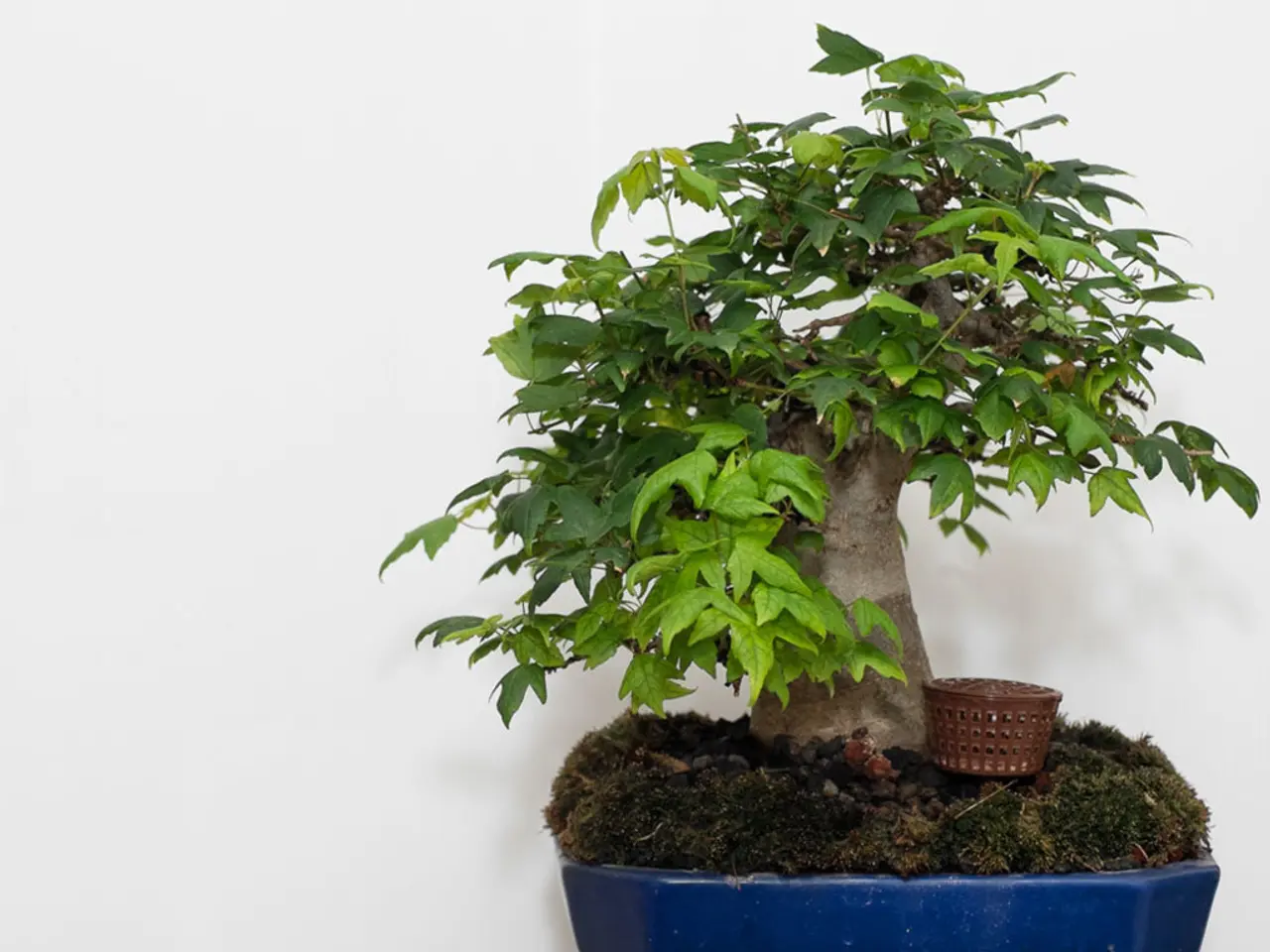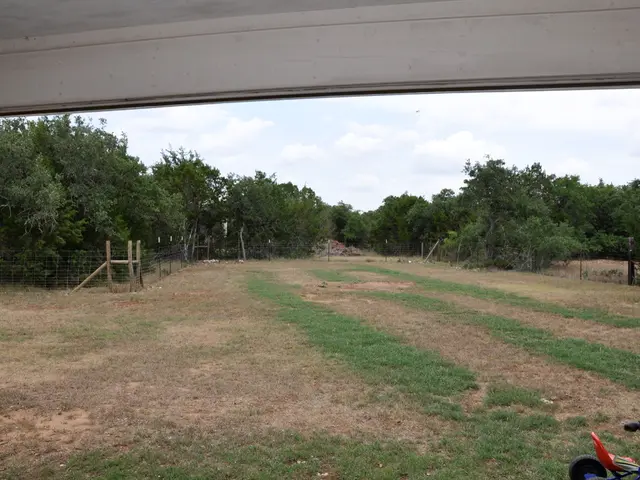Bonsai Art Enhancement: Boosting Bonsai Aesthetics by Jin and Shari
In the world of Bonsai, the art of harmonizing the design of branches and trunks is a delicate dance that requires a keen eye for balance and a deep understanding of the tree's inherent form. By mastering the Jin and Shari techniques, Bonsai enthusiasts can create compelling narratives of resilience and endurance, symbolized by weathered yet thriving bonsai trees.
To excel in these techniques, one must follow the natural grain and flow of the wood when carving Jin (dead branches) and Shari (stripped bark area on the trunk). This respects the tree’s inherent form, enhancing the illusion of natural weathering and resilience rather than an artificial appearance.
Creating texture and gradual refinements is another key step. Start with rough carving to form Jin and Shari, then progressively refine the shapes and textures to evoke aged, weather-beaten wood. This process often involves sanding and removing bark carefully to balance realism and artistry, emphasizing endurance.
Ensuring the Jin and Shari complement the overall design of the bonsai is essential. This integration helps tell a story of survival under tough conditions, with the deadwood enhancing the vitality and dynamic posture of the living parts of the tree.
Use pruning and wiring to support the visual narrative, encouraging upright growth and tight branch pads that contrast with the deadwood features, symbolizing strength and vitality alongside weathered endurance.
Study exemplary bonsai and practice observation skills such as drawing your trees. Drawing deeply helps you understand the shapes, light, shadow, and texture needed for realistic Jin and Shari expression, showing resilience naturally and meaningfully.
Visiting traditional bonsai centers like those in Omiya Bonsai Village can also provide inspiration and exposure to masterful naturalistic styles that emphasize resilience with minimal intervention.
When crafting Jin and Shari on branches, it is essential to prioritize preserving the structural integrity of the branch itself. A weakened or damaged branch can compromise the entire Bonsai. Preserving Branch Integrity is crucial when applying Shari techniques to Bonsai branches, as the delicate nature of these limbs demands a gentle, calculated approach to prevent damage and guarantee the overall health of the tree.
To create visually striking Jin and Shari on branches, strategically positioning these design elements is crucial. It can either harmonize with or disrupt the overall aesthetic of the Bonsai. When creating Jin on thin branches, balance is key; to prevent prominence, carefully gauge the branch's diameter, using subtle, gentle cuts and subtle wire wrapping to achieve harmony and visual subtlety.
Jin and Shari techniques can be adapted for deciduous tree species, requiring subtle adjustments to accommodate their unique branch structures and growth patterns.
Common mistakes to avoid when incorporating Jin and Shari techniques into branch design include over-emphasizing one technique at the expense of balance and harmony, failing to take into account the delicate nature of branches and the risk of damage, insufficient planning and lack of clear vision for the overall design, inconsistent application of techniques, and neglecting to step back and evaluate the Bonsai as a whole.
To achieve a well-balanced composition of Jin and Shari elements, consider the visual weight of each element, taking into account its size, shape, color, and placement on the branch.
By combining Jin and Shari techniques in innovative ways, Bonsai artists can create intricate, visually striking branch designs that evoke a profound sense of age and character.
Regular inspections of Jin and Shari on bonsai branches are vital to maintain their integrity and aesthetic appeal, aiming for bi-monthly checks to prune, clean, and protect these delicate features from damage or decay. The ideal branch diameter for crafting intricate Shari designs is between 1/4 to 1/2 inch (6-13 mm).
When applying Jin and Shari techniques too soon on newly styled trees, it can be akin to gilding an unfinished canvas, risking fragile balance and harmony.
Through careful application of Jin and Shari techniques, Bonsai artists can elevate their artistry, thoughtfully integrating these elements into branch design, creating a nuanced visual language that resonates with the viewer.
- In the realm of Bonsai, not only branches and trunks but also lifestyle elements like fashion-and-beauty, food-and-drink, home-and-garden, and relationships can benefit from harmonizing the design, demonstrating a similar delicate balance and understanding of each element's inherent form.
- To excel in enhancing fashion-and-beauty looks, one must follow the natural grain and flow of materials, respecting their inherent form, and evoking aged yet vibrant aesthetics, emphasizing endurance.
- Travel destinations can provide inspiration for food-and-drink creations, showcasing culturally-assembled dishes that harmonize various elements, symbolizing a blending of flavors and traditions alongside endurance.
- For home-and-garden design, incorporating pets as part of the creative process can create a narrative of harmonious coexistence, where both the design and pets embody strength, vitality, and weathered endurance.
- In the pursuit of education-and-self-development, shopping-wise choices should focus on investing in quality resources and experiences — much like selecting the right tree species when crafting Bonsai — to ensure the formation of a rich mental landscape, symbolized by the growth and resilience of the bonsai tree.




